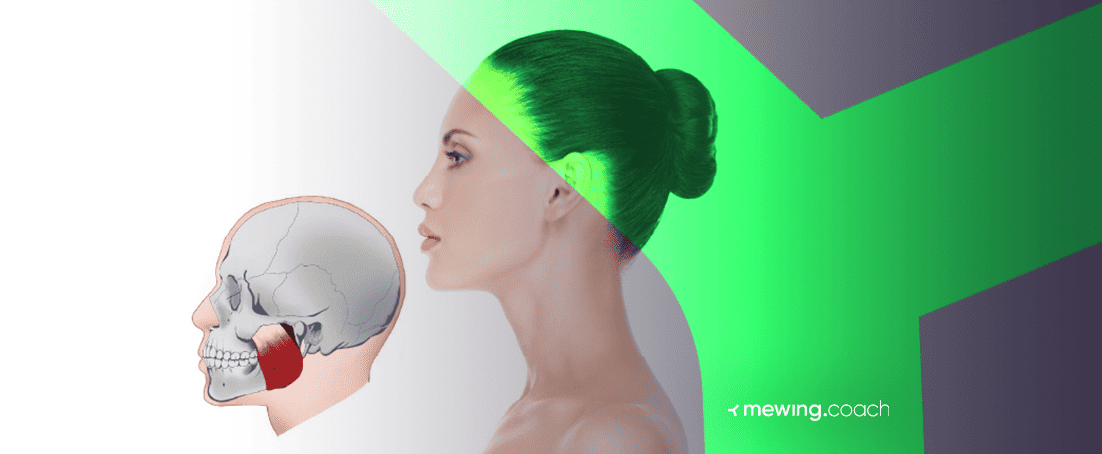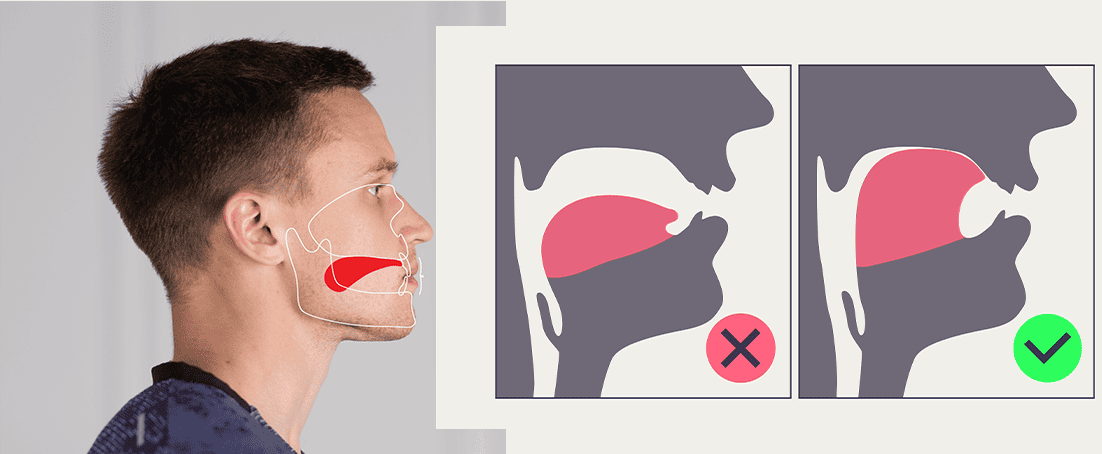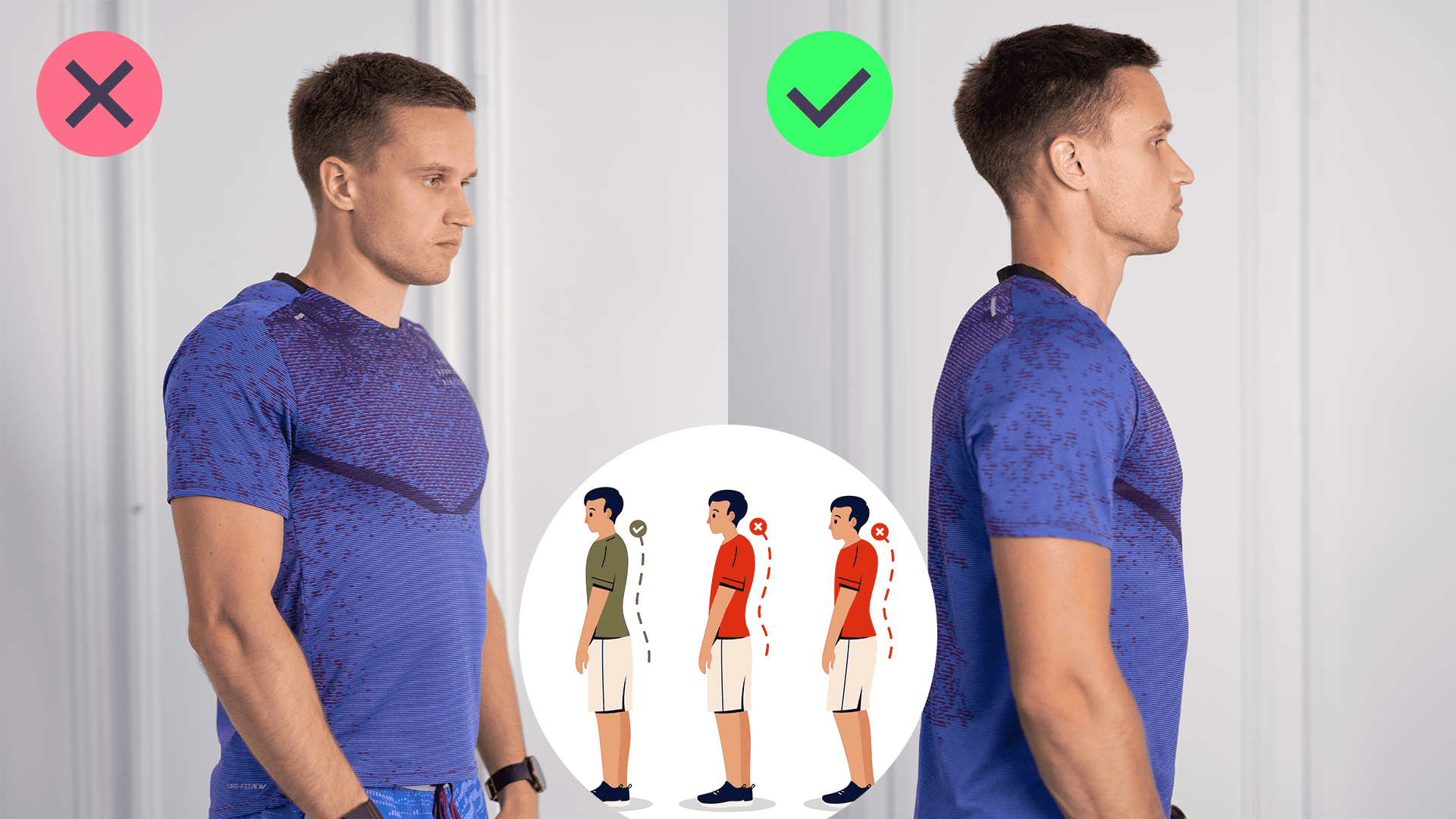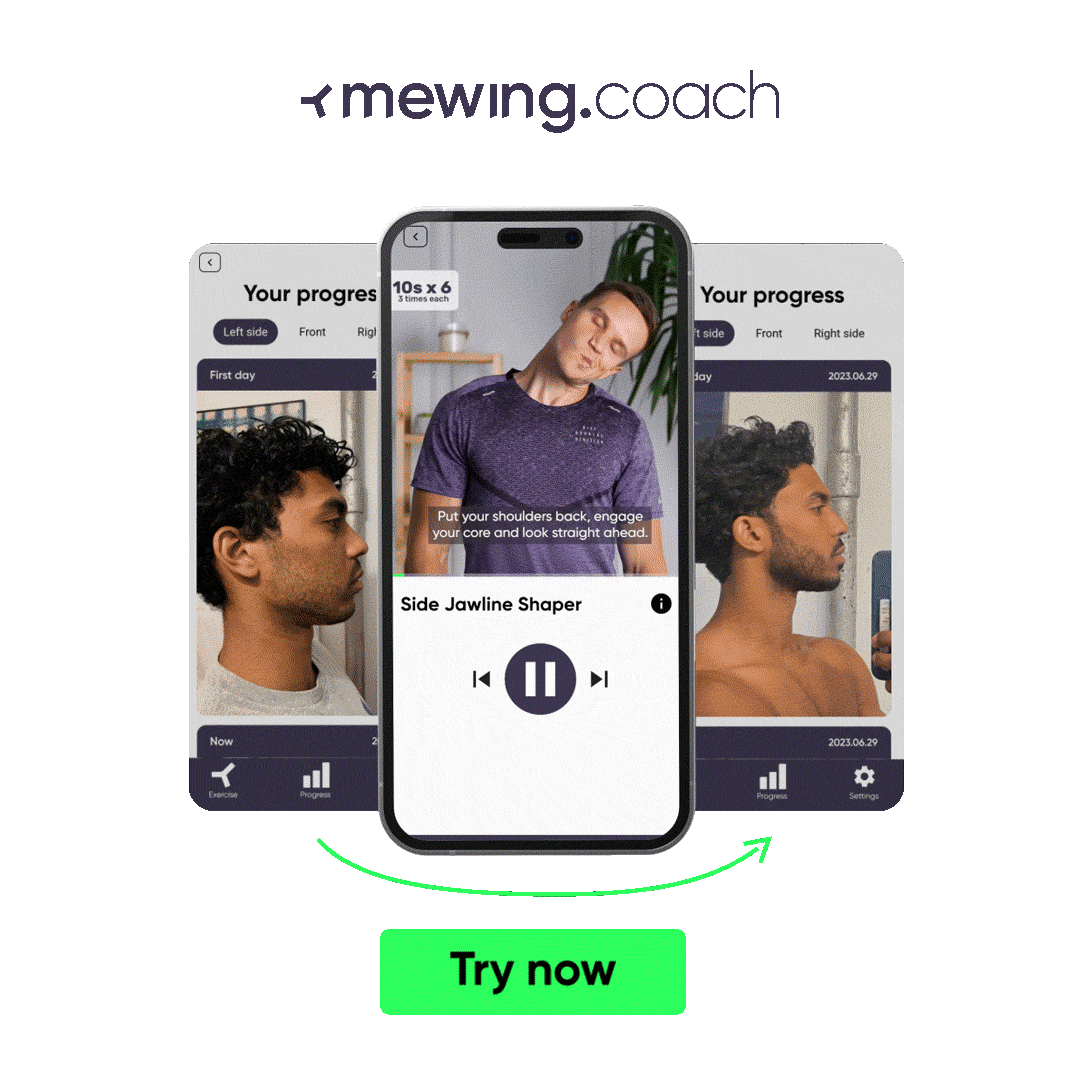
Mewing is an exercise that involves correct tongue posture. It was first introduced by Dr. John Mew, who first tested the technique on his son Mike Mew and proved positive results.
However, despite the existing evidence that mewing actually works, the British Orthodontic Society still disputed the study because it challenged the already existing oral and maxillofacial surgery options. So, due to the lack of more scientific evidence, mewing didn’t become the norm.
Nonetheless, Dr. Mike Mew decided to push his father’s theory forward and prove that mewing improves facial structure, fixes crooked teeth, and much more. But, truth be told, improper tongue posture can cause some side effects you’d want to be aware of.
The fact remains that when mewing is done correctly there will be no risks or side effects.
Skip the long read and learn how to do mewing right without any harm. Start with a quick quiz below!
In this article, we go over:
- 👄 What mewing is
- 👅 The proper mewing tongue posture
- 💪🏻 The mewing benefits for your face
- 📝 Several mistakes you should always avoid during mewing.
So, let’s get to it! 👊🏻
How Does Mewing or Proper Tongue Posture Work?

Before we jump into it, let’s talk, what is mewing all about.
Mewing means putting your tongue on the roof of your mouth. The tip of the tongue shouldn’t touch the front teeth but should be lifted so that the root of the tongue touches the palate and presses against the skull. During this exercise, you will be extending your facial muscles, which results in better jaw definition and sharp facial contours.
The optimal time for mewing is 20-30 minutes per day. During this period, you should divert all attention toward doing the exercises correctly.
There are two types of mewing – soft mewing and hard mewing. Soft mewing refers to the above-mentioned half-hour mewing exercise. The results will be visible within 10 to 12 weeks.
Hard mewing, on the other hand, involves more pressure and delivers better results faster. With this exercise, you apply extra pressure to the palate as if trying to expand it, and you’re not practicing for 20-30 minutes daily, but as long as you can hold your posture. For example, you’ll have to do it while exercising or eating.
Many people complain that their jawline feels painful when mewing, which is normal to some extent because it’s an exercise. However, if you feel pain when mewing on a regular basis, this may indicate irregular mewing, leading to certain side effects.
The content below describes what facial features can mewing change but also what can lead to side effects of mewing if things go sideways!
Mewing Mistakes, Side Effects, and the Way to Avoid Them
Just like with any other physical exercise, mewing comes with certain side effects if not executed correctly.
Therefore, apart from learning the correct way to position your tongue while mewing, you might have to pay attention to some of the mistakes you may do that cause the side effects of mewing.
15 Mewing Side Effects and What Causes Them

The tongue placement during mewing plays the greatest role. You should know that facial asymmetry comes from irregular tongue posture, which your body has accepted as default.
With mewing, you will rebuild the habit, but to do so, you might have to put in more effort. Plus, there are no shortcuts, so you might have to push yourself a little more.
Here are some of the common mewing mistakes you should avoid for optimal results:
1: Not Being Consistent
When you start mewing, it’s really important to keep up the rhythm so your tongue can pick up the new habit faster. The faster you adjust, the better the results!
To avoid forgetting to mew regularly, you can set an alarm to remind you. The best thing about it is that you can do it wherever you are since it’s not an exercise involving your body.
2: Cutting Off Airway
This is one of the most common mewing mistakes any beginner makes. It comes naturally to us to block the airway when lifting the tongue upwards.
To avoid any further complications, you should always place your tongue on the spot where you make the “NG” sound. Find this spot you push forward. You should focus on not pushing your tongue backward because you may end up choking.
3: Forgetting about the Back Third of the Tongue
This mistake is most prominent when your unfocused mewing becomes a habit.
It’s really important to remain focused throughout the entire exercise and do the exercise with the entire tongue – not only the middle part.
Many people end up with no results because they leave only the tip of the tongue resting on the roof of the mouth. By doing so, you’re only relocating your tongue and nothing more. Another possible scenario is that your tongue naturally caves down the throat, and you “mew” only with the tip of the tongue without even knowing.
Therefore, you have to make some effort and remind yourself always to check if you’re doing the exercise correctly or if you’re just developing another bad habit.
4: Touching and Pushing Your Front Teeth With Your Tongue
Regularly touching and pushing your front teeth for 20-30 minutes straight with your tongue can create a gap between the teeth, or in the worst case, you may end up with crooked teeth.
For that reason, it’s really important to keep your tongue position and not move the mewing posture because you may damage the teeth’ alignment.
5: Not Sealing Your Lips
The most common mistake with mewing is not closing your mouth while exercising. There’s no point in mewing if you keep your mouth open. The point is to seal your mouth and have your teeth slightly touching while you do the exercise with the tongue.
By practicing mewing with a sealed mouth, you will get a better jawline and emphasized facial structure.
6: Grinding Your Teeth
One of the most concerning mewing side effects is that you may end up with severe damage to your teeth from grinding them. Tooth erosion is no joke!
You should have well-positioned teeth when mewing and be careful not to add any pressure. Excessive pressure or teeth grinding can make your face shape more asymmetrical and damage the teeth.
7: Bad Body Posture

To get the best mewing results, you will also have to pay attention to your body posture. One of the most common reasons your face has an undefined jawline is having hunched shoulders.
What the hunch does is direct the head a bit forward and hanging. Being in this posture for some time will cause your chin to withdraw and lose the jawline definitions.
Mewing can help you fix this, but first, your must make sure that your head is in the appropriate position. Check if your ears are in line with your shoulders. If they are – great! If not, you’ll have to stand up straight with your head up.
Once you fix your head position, you can start mewing. Put the back of your tongue to the roof of the mouth, and do the McKenzie Chin Tucks to facilitate the body posture overall.
8: Forcing Yourself Too Much
Probably one of the most common reasons mewing has negative effects is the desire to have results faster, which is only possible through hard mewing, where you have to apply more pressure.
More doesn’t mean too much pressure, and some fail to recognize that, which leads to further facial asymmetry. Usually, when people add more pressure to one side of the palate, one side of the head will look different than the other.
Additionally, if you add too much pressure, you can create a double chin. Therefore, it’s really important to remain focused to get the best results. Remember to always apply pressure with your tongue lifted (including the back) to the entire palate.
The advanced hard mewing technique is something you should be fully concentrated on while doing it because it can backfire with some awful results.
9: Not Involving the Hyoid Muscles
The hyoid muscles are an integral part of the mewing exercise. They help your tongue lift to touch the roof of the mouth. If you fail to bring the tongue to the palate, this may indicate the hyoid muscles are not strong enough, which may be a problem.
The hyoid muscles and the free-floating hyoid bone are rooted in the tongue base and control the tongue movement. For example, when you push your tongue forward, it’s because of the hyoid muscles.
If you feel that your hyoid muscles need more agility to help you perform the correct mewing technique, you must stretch out the neck muscles to help you achieve the look.
10: Not Applying Even Pressure
We talked that applying too much pressure can deform your facial structure. However, not applying pressure evenly can be just as bad!
You cannot do the mewing technique correctly without paying attention to how much pressure you add, even in the case of soft mewing. The first mistake with mewing is that people simply push it to the skull without any concerns about how they apply it. This can lead to further facial deformities and crooked teeth.
On the other hand, when executed appropriately, it’s amazing how mewing affects crooked teeth.
11: Not Adopting the Mewing Position as a Fixed Tongue Posture
Mewing is an exercise where you reset your tongue posture to improve your health and overall facial structure.
However, it’s not an exercise where you put in the effort for half an hour and then go back to normal. The point of mewing is to trick your tongue to adopt a new position through this effortless exercise.
12: Incorrect Suction Hold or Swallowing
Many beginners struggle to adopt mewing while swallowing for fear they might choke. If you follow the steps, you won’t have any issues, so here we go:
- Put your tongue in the correct mewing position and fix your body posture. Keep your lips closed and the tongue up on the roof of your mouth.
- You will notice saliva forming while you hold the position.
- Try to roll the saliva down the esophagus without stretching the facial muscles.
- Keep up with this exercise until you perfect it.
You should read our full guide on how to swallow while mewing to get the best results.
13: Having Your Mouth Open Wide
It’s really important to keep your mouth closed during mewing because that’s the only way you can see some results. Especially if you’re impatient!
Otherwise, mewing with your mouth open won’t worsen your facial structure, but it will delay the results.
Also, having your mouth open is a reflex when mewing gets a bit hard. Remember that if mewing feels too hard, you should immediately stop and rest.
14: Attempting to Mew When Chewing and Talking
When you’re chewing or talking while mewing, you’re further delaying the results. While chewing in the mewing position is possible, it is not recommended because you might choke accidentally. However, we have some tips on how to chew while mewing if you want faster results.
Trying to mew while talking just won’t work. You need the root of your tongue touching the palate, and you need the lips sealed to have some mewing effects. Plus, mewing obstructs your speech.
15: Pinching Your Cheeks With Your Teeth
Some people try pinching their cheeks to enhance the mewing technique. However, what they don’t realize is that they’re ruining the mewing posture and only making things worse.
Let us repeat this: mewing and pinching your cheeks won’t contribute to more defined or hollow cheeks, or make you lose fat there. It’ll only leave you with an incorrect mewing technique and no results.
How to Avoid these Side Effects of Mewing?
All these side effects can be avoided if you mew correctly. But, how to mew correctly? Either visit a doctor to control your progress or download the Mewing.coach app.
The app will guide you through the entire mewing process to ensure that you’re doing the exercise correctly, allow you to keep track of your progress, and give you some tips from Dr. Mike Mew. Also, you can check out some mewing before and after profiles to motivate yourself when you don’t feel like mewing.
It takes a minute to download the app, and it feels the same as working out with a therapist. You will get proper instructions to do the mewing technique correctly and much more. So, download and explore – you won’t regret it!
The Side Effects of Mewing Mistake: Conclusion
Mewing is one of the trendiest facial exercises that improves the structure and face definition at no cost and without surgery. Since it’s a DIY method, many are hesitant to try it and ask themselves the question, “is mewing dangerous“?
Well, it’s not, but it is a double-edged sword.
As we’ve seen in the photos, mewing works wonders for your facial structure, reducing facial lines, highlighting the cheebones, and evening out your jawline.
But at the same time, improper tongue posture can deform your face by having the opposite effect and even induce jaw pain. Therefore, it’s really important to remain focused when mewing and follow the instructions of your doctor.
If you can’t go to the doctor, you can always rely on the Mewing.coach app to form a good mewing habit. The app will teach you to avoid some mistakes, like keeping a forward head posture, not raising your tongue to the palate, and not keeping your mouth closed.
To get the best results, you must abandon the old tongue posture and replace it with a proper one, eventually making it into a habit. So, be patient, trust the process, and results will be inevitable!




